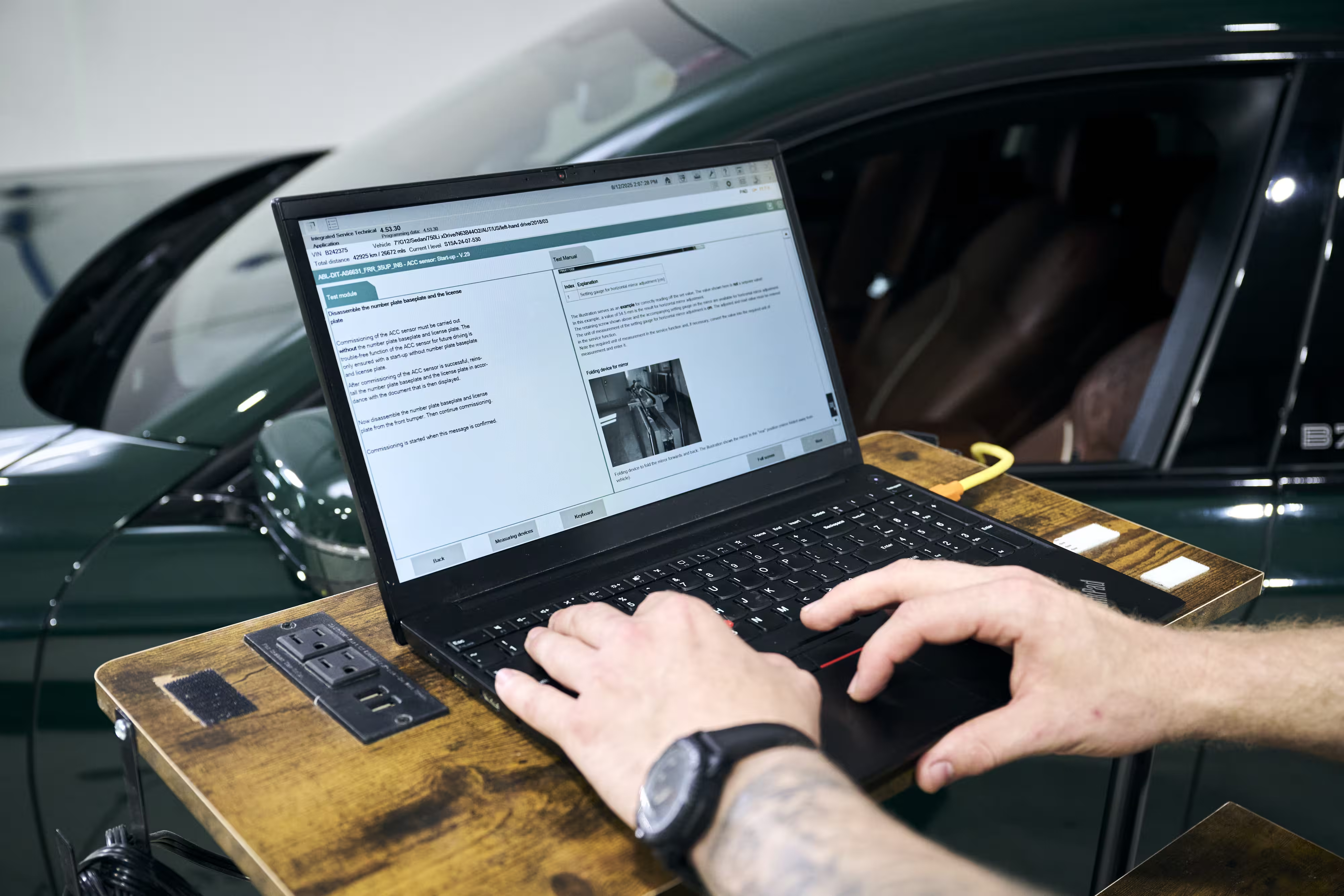Eliminating Manual Data Entry Across Your Shop
Streamline estimates, reduce errors, and accelerate insurance approvals with automated data entry for collision and repair shops.
October 1, 2025

Every collision and repair shop is well aware of how much time manual data entry takes. The front service staff often find themselves drowning, with service writers, estimators, and customer support reps taking the heaviest burden.
Despite their best efforts, the backlog of work is both slow and prone to human error, where even experienced technicians may use the wrong name or misspell something that causes delays. Customers wait longer for estimates, and your pipeline slows down.
But we’ve got good news: There are now tools that can reduce (and potentially even eliminate) manual data entry for your shop, helping you create more accurate estimates for customers and insurance companies alike. Your customers are happier and they convert faster, and in this post, we’ll go over everything you need to know about automated data entry to make that happen.
The data entry tasks that are bogging down collision and repair shops
When vehicles arrive at a collision shop or an ADAS sublet shop, there’s typically a long list of repairs and calibrations that need to be accounted for. Straightening the frame, for example, could disrupt multiple critical ADAS systems, in addition to the standard physical repairs that need to be made.
In some cases, sublet companies will handle the programming or ADAS calibrations that may be needed for your shop. And while that’s helpful, your estimating system likely doesn’t automatically populate that on your repair order. As a result, your shop’s front office staff needs to manually enter all those calibrations in.
Receiving estimates of record can be time-consuming data entry work. When third-party adjusters or appraisers hand over that estimate of record on behalf of the insurance company, your team needs to re-key that information into your system.
The downsides of manual data entry
We likely don’t have to tell you this, but manual data entry is time-consuming and error-prone. And what’s time-consuming is expensive and those errors add up to even more time.
Keying and re-keying estimates or completed work takes up a significant chunk of your front office staff’s time, and it can actually delay the estimate and approval processes. You may have customers’ vehicles sitting at your shop longer, adding time to the overall conversion process and delaying revenue.
Likewise, even the best workers make mistakes. People may accidentally use the wrong name for systems, since every vehicle manufacturer has their own. Or, entries may be too vague about what’s actually been calibrated, which can cause delays or denials from insurance companies. And then there’s always the good ol’ misspellings, which can cause their own confusion.
How to eliminate manual data entry in collision shops
Revv can eliminate or at least heavily reduce data entry for most collision and repair shops.
Our system helps shops and technicians save time by automatically pulling up OEM-required and VIN-specific calibrations based on the projected repairs a vehicle may need. And while we already integrate with CCC’s estimating platform to access data, we’re finalizing our two-way integration that will allow us to send data back.
When this happens, all those ADAS calibrations— and everything on your Revv report— will automatically be added to your shop’s CCC or that particular RO. This completely eliminates the need for your team to enter calibrations and pricing manually.
And here’s the best part: Because our system is trained with OEM data, we’re going to use the same nomenclature that your vehicle manufacturer uses. You don’t have to worry about a team member accidentally calling Honda’s system by names that Toyota uses, which could cause confusion and delay insurance approvals.
Conducting audits to ensure data accuracy
Today, if you’re using tools like Revv to eliminate data entry, you can count on the fact that these tools are highly accurate.
Despite this, industry experts still typically recommend conducting random audits on your files. You want to make sure that your team is documenting everything properly and that there aren’t any critical gaps in information. Ultimately, this is still about making sure that your team is using the tools correctly, and you can identify opportunities to provide training if needed.
Audits also offer some protection from your business. If there’s ever pushback or a concern, you have documented proof that you were reviewing invoices, estimates, and processes carefully over time. It shows due diligence, which can count for a lot.
We typically recommend to either pull 10 files or a small percentage of the total repairs completed at random. Review the documentation, including how the estimates compare to the final bill. That said, compliance may look a little different from shop to shop, and you may want to look at different metrics.
For example, some shops may need to be auditing to maintain or receive OEM certifications. Others may be focused on achieving high net promoter scores (NPS) and customer satisfaction (CSAT) scores. These audits can be invaluable not only for documentation verification, but to maintain your certification status or discover other ways to improve the customer experience.
Eliminate manual ADAS data entry with Revv
When you’re eliminating manual data entry, it can change how your shop operates day-to-day. Customers get updates and estimates faster, insurance approvals can come quicker, and you can move vehicles through your pipeline without delays. This can help secure insurance reimbursals, increase customer satisfaction, and help you maximize profit all at once.
Revv can already pull data from CCC, and our two-way integration is just around the corner.
Shops will be able to completely automate data entry from ADAS reports coming from sublets and estimates coming from insurance companies. The time savings will be significant, and everyone on your team will benefit as a result.
Want to learn more about how Revv can help you offer complete calibration services and maximize your revenue? Book your demo today.
